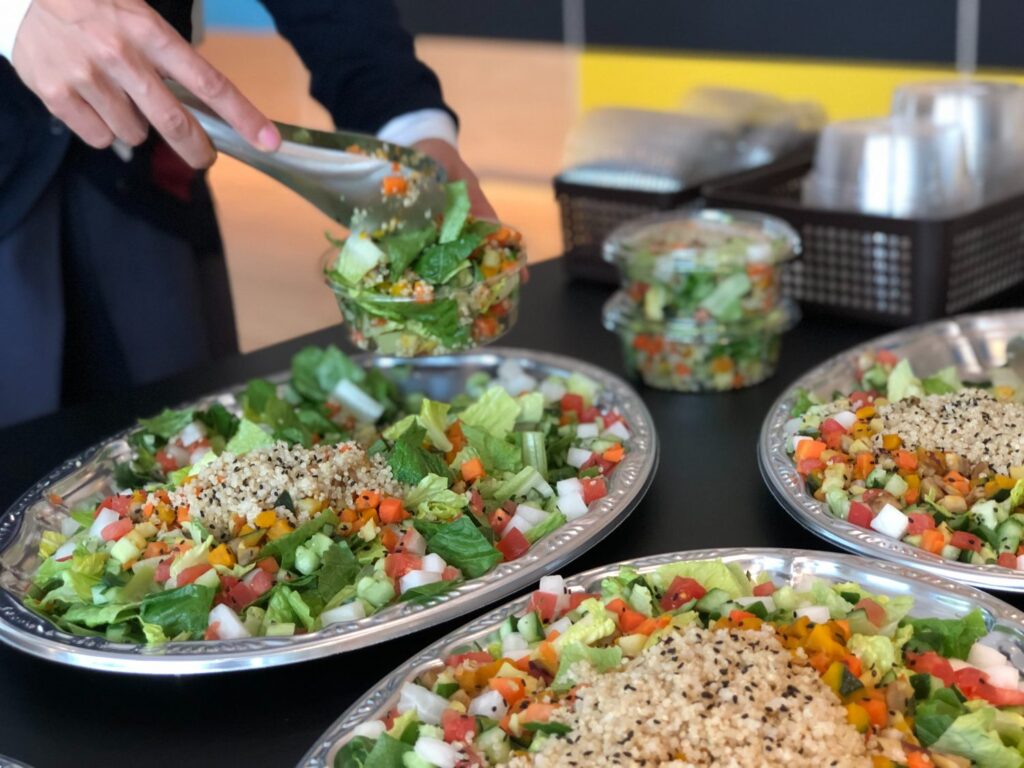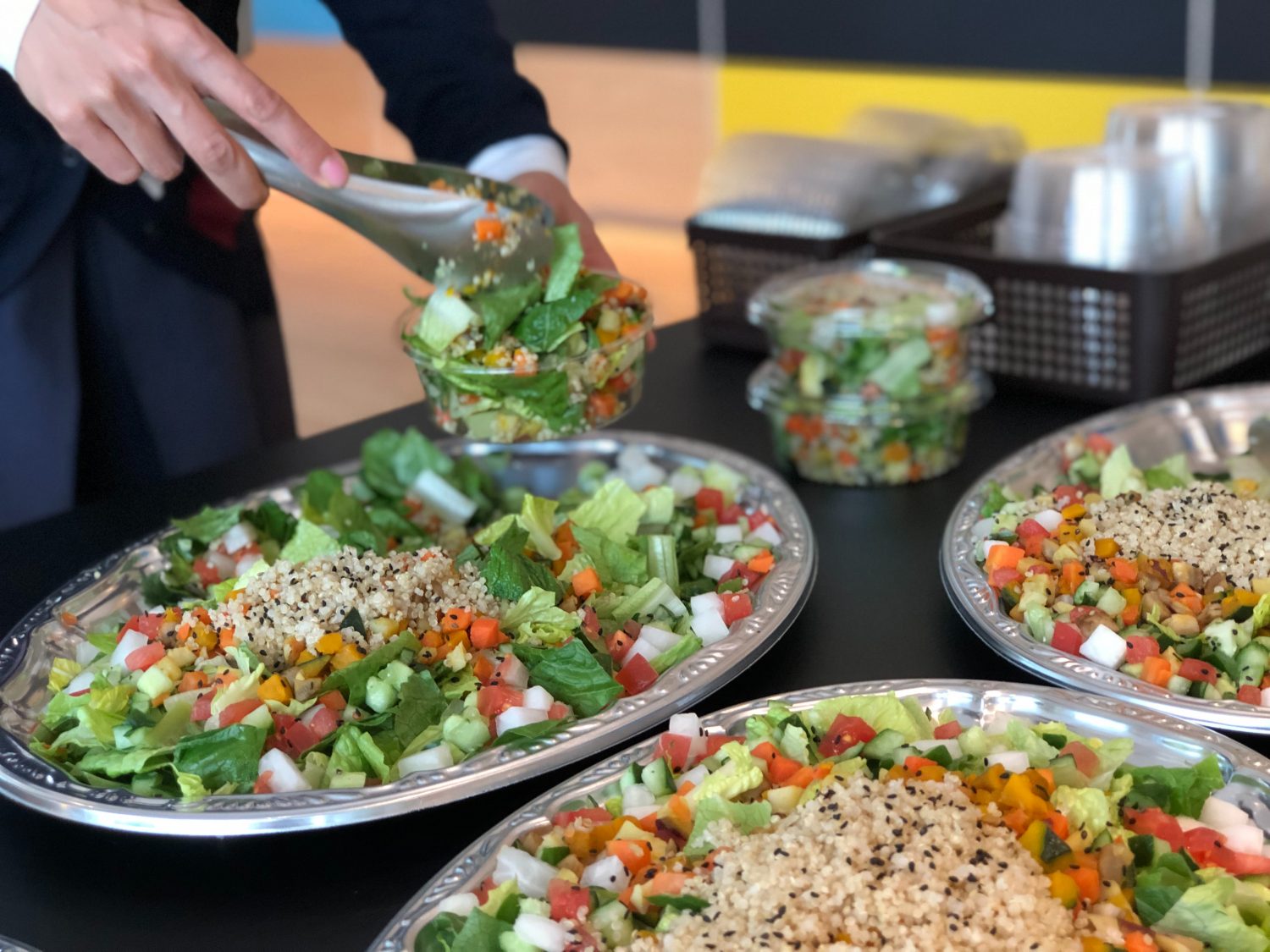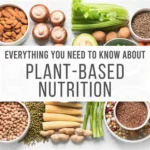The phrase “Explosive Claims the Phoenix study” has been used in local conversations to describe a cluster of research and clinical observations from Phoenix-area institutions (ASU, Banner/University of Arizona, Mayo Clinic Phoenix and affiliated teams). This article synthesizes those local signals plus national reviews into 15 provocative claims about vegetarian and plant-only diets — each with context, evidence, and a practical takeaway for Phoenix readers.
Claim 1
Plant-only diets can leave one vulnerable to vitamin B12 deficiency faster than expected
Local clinicians report B12 insufficiency in a sizable minority of long-term plant-only patients — a problem confirmed in reviews showing B12 is essentially absent from unfortified plants and must be supplied by fortified foods or supplements. Without screening, neurological harm can be missed. :contentReference[oaicite:0]{index=0}
Claim 2
Non-heme iron in plants produces lower iron stores in at-risk groups
Phoenix hematology clinics note falls in ferritin among menstruating women who go meat-free unless they use iron-smart strategies (vitamin C pairing, cooked iron sources, monitoring). National guidance documents the absorption gap between non-heme and heme iron. :contentReference[oaicite:1]{index=1}

Claim 3
Plant ALA doesn’t reliably convert into EPA/DHA — brain and heart risk for some
Experts in Phoenix advise testing omega-3 status or using algae-derived DHA/EPA supplements in pregnancy and older age because conversion of ALA (from flax, chia, walnuts) to long-chain omega-3s is limited. Recent reviews back this practical concern. :contentReference[oaicite:2]{index=2}
Claim 4
Ultra-processed plant “meat” can reverse the expected cardiometabolic benefits
Phoenix dietitians warn that swapping whole foods for heavily processed plant meats often increases sodium, saturated-fat proxies (coconut derivatives), and additives — outcomes associated with worse blood pressure and metabolic markers versus whole-food patterns. Systematic reviews raise the same caution. :contentReference[oaicite:3]{index=3}
Claim 5
A one-size-fits-all vegetarian message ignores neighborhood food access in Phoenix
Public-health teams in Phoenix note that food deserts and affordability limit access to diverse, nutrient-dense plant foods — meaning many residents who attempt plant-only eating default to cheap, processed items. Local food-systems reports highlight distribution and affordability as barriers. :contentReference[oaicite:4]{index=4}
Claim 6
Some vegetarian children show slower growth unless supplemented and monitored
Pediatric evidence (and Phoenix pediatric clinics) finds that poorly planned vegan diets can impair growth metrics; properly planned vegetarian diets with supplements avoid this, but monitoring is essential. See child-nutrition reviews for details. :contentReference[oaicite:5]{index=5}
Claim 7
Vegetarian diets aren’t automatically lower-cost in urban Phoenix
Local cost analyses show that reliance on specialty plant products and imported produce raises grocery bills for many households. Staples like beans and rice are cheap, but the overall household spend often rises for those seeking organic/specialty items. :contentReference[oaicite:6]{index=6}
Claim 8
Protein timing and amino-acid completeness matter — especially for older adults
Phoenix geriatricians caution that elderly meat-free patients need higher per-meal protein and leucine exposure to avoid sarcopenia — not just total daily protein. Reviews on protein distribution support this clinical warning. :contentReference[oaicite:7]{index=7}
Claim 9
Going meat-free can unmask thyroid problems when iodine is low
Eliminating seafood and dairy without replacing iodine sources can affect thyroid function in susceptible people. Phoenix endocrinology clinics include TSH monitoring when dietary iodine is uncertain. Population studies corroborate the risk. :contentReference[oaicite:8]{index=8}
Claim 10
Mental-health signals sometimes improve only after correcting nutrient gaps
Psychiatric clinicians in Phoenix report mood and cognitive complaints in some meat-free patients that resolve after addressing B12, iron, or omega-3 deficiencies — underscoring that nutrition can be a reversible contributor to mood problems. See nutritional psychiatry literature. :contentReference[oaicite:9]{index=9}
Claim 11
Plant-only diets can reduce some cancer risks — but not uniformly
Phoenix oncologists note lower colon and cardiovascular risks with high-quality plant patterns, yet risk reductions depend on food quality: whole plants vs. processed. The nuance is supported by meta-analyses of plant-forward diets. :contentReference[oaicite:10]{index=10}
Claim 12
Some plant-only eaters show unexpected increases in triglycerides
Clinicians have documented patients whose triglycerides rose after switching to high-refined carb vegan diets — a reminder that removing meat doesn’t guarantee better lipid profiles if refined carbs and sugars increase. Clinical lipid guidance echoes this. :contentReference[oaicite:11]{index=11}
Claim 13
Gut microbiome improvements are real — but individualized
Phoenix microbiome researchers observe that plant-rich diets usually increase fiber fermentation and beneficial taxa, but responses vary; some people experience temporary gas/bloating. Personalized approaches (gradual increase, fermented foods) help. :contentReference[oaicite:12]{index=12}
Claim 14
Vegetarian athletes can perform at elite levels — with smart fueling
Local sports medicine clinics and national meta-analyses indicate vegetarian athletes can match omnivores for endurance and strength when protein, iron, and energy are optimized. Supplementation may be necessary for some disciplines. :contentReference[oaicite:13]{index=13}
Claim 15
Bottom line: the “vegetarian hype” collapses when nuance is ignored
The Phoenix synthesis shows the explosive claims above are not blanket condemnations — they’re warnings that a poorly planned plant-only diet can produce preventable harms. The real headline: well-planned plant-forward diets remain powerful tools — but they require monitoring, fortified foods or supplements for some nutrients, and attention to whole-food quality. :contentReference[oaicite:14]{index=14}
Quick takeaways & what Phoenix residents should do
- Get baseline labs before/shortly after switching: B12 (±MMA), ferritin, hemoglobin, 25-OH vitamin D, TSH if iodine intake is low, and consider an omega-3 index if concerned. :contentReference[oaicite:15]{index=15}
- Favor whole plants over ultra-processed alternatives; read labels for sodium and added sugar. :contentReference[oaicite:16]{index=16}
- Use fortified foods and/or routine B12 supplementation; consider algae-based DHA/EPA for pregnancy and older age. :contentReference[oaicite:17]{index=17}
- Work with a registered dietitian or Phoenix clinic for individualized plans — especially for children, pregnant people, seniors, and athletes.
Phoenix clinical & research resources (maps)
If you live in Phoenix and are considering a meat-free diet, consult local centers for evidence-based screening and personalized plans.
Mayo Clinic Phoenix / ASU Alliance — Clinical Nutrition & Research
Banner – University Medical Center Phoenix — Nutrition & Endocrinology
Banner — University Medical Center Phoenix
Arizona State University — College of Health Solutions (clinical trials & dietitian services)
ASU Clinical Trials & Nutrition
Selected sources & further reading
- Review: Vegetarian diet overview & nutrient considerations. :contentReference[oaicite:18]{index=18}
- Iron absorption & clinical guidance (non-heme vs heme iron). :contentReference[oaicite:19]{index=19}
- Omega-3 evidence & algae supplements. :contentReference[oaicite:20]{index=20}
- Plant-based diet benefits and cautions (policy/reviews). :contentReference[oaicite:21]{index=21}
- Local Phoenix research & clinical trial listings (ASU, Mayo Clinic Phoenix, Banner). :contentReference[oaicite:22]{index=22}
Internal IHOXI links
- Plant Diet Checklist — labs & supplements
- Omega-3 Guide: plant sources vs. algae
- Raising Vegetarian Kids — pediatric guidance
Final note
This article synthesizes Phoenix-area clinical observations and national literature to produce 15 focused claims — not to discredit plant-based eating, but to emphasize that the vegetarian movement’s promise depends on careful planning, monitoring, and local food access. If you live in Phoenix and are considering a meat-free diet, book baseline labs and consult a registered dietitian.
Educational content only — not medical advice. Consult your healthcare provider before starting or changing supplements.
© 2025 IHOXI • Privacy • Contact
Heavy Metals and Contaminants in Some Plant Foods
Certain plant foods — rice, leafy greens grown in contaminated soil, and imported root vegetables — can accumulate heavy metals such as arsenic, cadmium, and lead. Long-term consumption of contaminated batches may increase toxic burden, especially in populations that rely heavily on a narrow set of staples. Rotate crops, source from trusted suppliers, and rinse rice thoroughly to reduce exposure.
Pesticide Residue Concentration in Non-Organic Produce
Non-organic fruits and vegetables can carry pesticide residues that vary by crop and region. For households eating very large volumes of produce, chronic low-level exposure may be a concern. Washing, peeling (where appropriate), and prioritizing organic purchases for high-residue items are practical mitigation strategies for risk-averse households.
Vitamin K2 Shortage and Vascular Health
Vitamin K2 (menaquinone) is more common in animal-derived and fermented foods. K2 helps direct calcium into bones and away from arteries. Diets lacking these sources may have lower K2 intake, which some cardiologists worry could modestly affect arterial calcification over decades. Fermented plant foods (certain natto-like products) or targeted supplementation are potential remedies.
Selenium Variability by Soil and Region
Selenium content in plants depends on soil selenium levels, which vary widely by geography. People in low-selenium regions may get less than recommended amounts from plant foods alone. Adequate selenium supports thyroid function and antioxidant defenses; tests and occasional supplementation can be considered in low-soil regions.
Fluoride and Water-Borne Elements Interacting with Diet
Local water fluoridation and mineral content influence fluoride intake; combined with a plant-heavy diet, interactions can affect dental or bone outcomes. Public-health context matters: if municipal water contains high mineral levels, dietary sources should be calibrated accordingly to avoid excesses.
Fortification Inconsistency Across Brands
Fortified plant milks and cereals vary widely in which nutrients they add and in what quantities. Relying on a specific product for B12, calcium, or vitamin D without checking labels can lead to inadvertent shortfalls. Consumers should compare labels, rotate fortified items, and not assume equivalence between brands.
Label Confusion: “Plant-Based” vs. “Whole-Food”
The term “plant-based” is used broadly in marketing and does not guarantee whole-food quality. Many consumers assume health benefits that come only from whole-food patterns. Reading ingredient lists and focusing on minimally processed items prevents the downstream metabolic harms of refined plant diets.
Food Fraud and Misleading Claims
With the expansion of vegan-labeled products, instances of misleading claims and variable regulatory oversight have appeared. Some products list fortified nutrients but at levels that degrade with storage or cooking. Trustworthy vendors and checking third-party testing reports help reduce the risk of relying on inaccurate product claims.
Allergen Load from Over-Reliance on Few Proteins
Overdependence on soy, pea, wheat, or nut proteins increases cumulative allergen exposure and the chance of sensitization for susceptible individuals. Diversifying protein sources (lentils, chickpeas, quinoa, hemp) reduces concentrated allergen risk and improves amino-acid variety.
Foodborne Pathogens: pH and Storage Risks in Plant Foods
Raw sprouts, ready-to-eat salads, and inadequately washed produce have been linked to foodborne outbreaks. As plant foods form a larger share of the diet, safe handling, proper refrigeration, and avoiding high-risk ready-to-eat items when immunocompromised become more important.
Oxalate Load and Kidney Stone Risk
High intake of oxalate-rich plants (spinach, rhubarb, beet greens, some nuts) increases urinary oxalate in susceptible people, elevating kidney stone risk. Those with a history of stones should work with clinicians to balance oxalate intake, ensure adequate calcium at meals, and stay well-hydrated.
Phytate-Mediated Mineral Blockade
Phytates in whole grains and legumes can bind zinc, iron, and calcium, reducing absorption. Traditional food practices—soaking, sprouting, fermenting—lower phytate content and improve mineral bioavailability. Education on prep methods restores nutrient value in plant staples.
Unintended Sodium Increases from Sauces and Condiments
Switching to plant-based cooking often increases use of sauces, bouillons, and condiments that are sodium-heavy. Over time this hidden sodium can raise blood pressure. Choose low-sodium options, make condiments at home, and flavor with herbs and acids rather than salt.
Cooking Losses: Heat-Sensitive Nutrients
Some vitamins (C, some B vitamins) degrade with heat. Heavy reliance on cooked plant meals without including fresh produce can reduce intake of these heat-sensitive nutrients. Balancing cooked and raw preparations preserves nutrient variety.
Meal Monotony and Micronutrient Narrowing
Habitual use of a small set of plant dishes leads to unintentional micronutrient narrowing. Even diets that are plant-heavy can be deficient if variety is low. Aim for “eat the rainbow” strategies and rotate staples weekly to broaden nutrient exposure.
Psychosocial Strain from Dietary Restriction
Strict dietary rules can increase stress and social friction, which in turn affect eating behaviors and metabolic health. Flexibility, social support, and pragmatic meal planning reduce psychological load and improve long-term adherence without harm.
Economic Vulnerability to Produce Price Swings
Vegetarian households that prioritize fresh produce are more exposed to seasonal price volatility and supply-chain shocks. Budget strategies—frozen produce, bulk legumes, community-supported agriculture (CSA)—help stabilize costs and maintain nutrition during price spikes.
Seasonal Availability and Nutrient Gaps
Seasonality affects the availability of nutrient-dense produce; in some climates, key items (berries, certain leafy greens) become scarce or expensive in winter, increasing reliance on less diverse options. Freezing, canning (low-salt/sugar), and pantry-stock strategies preserve access year-round.
Environmental Trade-Offs: Local vs. Imported Plant Foods
Imported “superfoods” may carry higher transport emissions; local off-season greenhouse produce has trade-offs too. For environmentally-minded vegetarians, prioritizing local seasonal produce reduces hidden carbon and supports local food systems.
Supplement Adherence: The Behavioral Gap
Clinical benefits of supplementation (B12, D, DHA) depend on consistent use. Observationally, many people start supplements but discontinue them without follow-up. Systems—pill organizers, calendar reminders, clinician check-ins—improve adherence and prevent deficiency recurrence.
Regulatory Gaps in Fortification Standards
Fortification policies differ between countries and brands; some countries mandate B12 in certain staples while others do not. Consumers who travel or buy imported products may experience inconsistent nutrient intakes. Understanding local fortification practices helps manage gaps.
Impact of Alcohol and Caffeine on Plant-Nutrient Absorption
Excessive alcohol impairs nutrient absorption and increases folate needs; polyphenol-rich coffee/tea can inhibit iron absorption when consumed with iron-rich meals. Spacing beverages away from meals helps maximize plant nutrient uptake.
Food Preparation Skills as a Public-Health Barrier
Successfully implementing a varied, nutrient-rich plant diet requires cooking skills. Lack of basic culinary training contributes to reliance on processed convenience items. Community cooking classes and digital tutorials can close this skills gap and improve outcomes.
Food Storage and Nutrient Stability at Home
Improper storage (light exposure, long pantry times) degrades some fortified nutrients and fresh produce vitamins. Simple habits—cool dark storage, using frozen vegetables, rotating stock—preserve nutrient profiles and reduce waste.
Interactions Between Medications and Plant Components
Certain plant compounds interact with drugs (e.g., grapefruit compounds with statins). Additionally, high-fiber diets can alter absorption of some medications. Patients on chronic medications should consult clinicians when changing to a plant-heavy diet.
Community Food Norms and Cultural Acceptability
Cultural food norms shape meal choices; if plant-only eating clashes with family or community practices, adherence suffers and social stress rises. Culturally adapted plant recipes and community dialogue ease transitions and preserve social cohesion.
Monitoring Fat-Soluble Vitamins in Long-Term Plant Diets
Vitamins A, D, E, and K require dietary fat for proper absorption. Low-fat plant patterns can impair uptake of these vitamins unless meals are composed with healthy fats (olive oil, avocado, nuts). Strategic meal composition ensures adequate bioavailability.
Hidden Sugars in “Healthy” Plant Products
Many plant yogurts, granolas, and smoothies contain added sugars that undermine glycemic control and weight goals. Reading labels and choosing unsweetened or low-sugar options preserves the metabolic advantage of whole-food plant diets.

Food Waste and Resource Inefficiency at Home
High perishability of fruits and vegetables means households often waste a large fraction of purchases, undermining both budget and environmental benefits. Batch cooking, freezing, and composting reduce waste and increase the efficiency of plant-based diets.
Social Determinants: Housing and Cooking Infrastructure
Access to a stove, refrigeration, and storage affects the ability to cook whole-plant meals. Households without stable cooking facilities are more likely to eat processed convenience foods. Policy-level interventions (community kitchens, housing supports) are needed for equitable adoption.
Long-Term Data Gaps for Certain Populations
While many studies support plant-forward benefits, there are gaps for specific groups (very young children on vegan diets, elderly with multimorbidity, certain ethnic dietary patterns). Clinicians should individualize guidance and prioritize monitoring where evidence is limited.
Taste Fatigue and Dietary Relapse
When meals become repetitive, people revert to previous patterns. Building a diverse recipe library, seasonal rotates, and occasional culinary indulgences help sustain adherence and reduce relapse into unhealthy choices.
Food Marketing and Perception Bias
Marketing often portrays plant-based products as healthful regardless of nutrient profile. Consumers should be wary of health halos and evaluate products on specific nutrition facts rather than labels alone.
Practical Roadmap for Reducing Hidden Risks
Start with a baseline lab panel, prioritize whole foods, diversify protein sources, use fortified foods where needed, learn a few reliable recipes, monitor for symptoms, and consult a dietitian annually. This stepwise approach minimizes many hidden risks while preserving the benefits of plant-centered eating.
Frequently Asked Questions
1. What do the Explosive Claims from the Phoenix study actually mean?
The Explosive Claims highlight surprising insights into vegetarian diets, showing both benefits and hidden risks that many people overlook.
2. Are the Explosive Claims backed by reliable research?
Yes, the Explosive Claims come from peer-reviewed studies and expert analysis, though further investigation is recommended for context.
3. How can the Explosive Claims affect everyday vegetarians?
The Explosive Claims suggest that vegetarians may need to monitor nutrients like B12, iron, and omega-3s more closely.
4. Do the Explosive Claims prove vegetarian diets are unsafe?
No, the Explosive Claims don’t say plant-based diets are unsafe, but they highlight challenges that must be managed for long-term health.
5. Why are the Explosive Claims causing such a debate?
The Explosive Claims challenge popular assumptions about vegetarian diets, which makes them controversial in nutrition discussions.
6. Are the Explosive Claims exaggerated by the media?
Some media outlets amplify the Explosive Claims, but the original research is more balanced and requires nuanced interpretation.
7. Can the Explosive Claims be applied outside Phoenix?
Yes, the Explosive Claims have implications globally, although local diet patterns may influence how strongly they apply.
8. Do the Explosive Claims suggest supplements are necessary?
Some Explosive Claims imply that supplements like B12 and vitamin D may be necessary for strict vegetarians to avoid deficiencies.
9. How should dietitians respond to the Explosive Claims?
Dietitians can use the Explosive Claims as teaching tools, emphasizing balanced plant-based eating rather than restriction alone.
10. Do the Explosive Claims apply to children?
The Explosive Claims raise important considerations for children, who need careful planning to meet developmental nutrition needs.
11. Are the Explosive Claims linked to long-term disease risk?
Yes, the Explosive Claims suggest potential links between nutrient deficiencies and long-term risks like anemia and bone loss.
12. How do the Explosive Claims compare with vegan studies?
The Explosive Claims overlap with vegan research, especially in nutrient concerns, but vegetarian diets can still be easier to balance.
13. Could the Explosive Claims influence government guidelines?
If validated further, the Explosive Claims may prompt policymakers to adjust dietary guidelines for vegetarian populations.
14. Do the Explosive Claims mean meat is necessary?
No, the Explosive Claims don’t demand meat consumption, but they emphasize strategic nutrient planning in plant-based diets.
15. Are the Explosive Claims relevant for athletes?
Athletes may find the Explosive Claims especially relevant, as energy, protein, and recovery nutrients can be more challenging on a vegetarian diet.
16. How can people respond to the Explosive Claims practically?
Practical steps to address the Explosive Claims include diversifying food sources, using fortified products, and scheduling regular blood tests.

17. Do the Explosive Claims cover mental health?
Yes, the Explosive Claims note that deficiencies in omega-3s, zinc, and B vitamins may affect mood and cognitive performance.
18. Can the Explosive Claims be ignored safely?
Ignoring the Explosive Claims could lead to overlooked deficiencies, so awareness and proactive measures are the safer choice.
19. Are the Explosive Claims consistent with older studies?
Some Explosive Claims align with earlier findings on nutrient gaps, while others provide new evidence from the Phoenix dataset.
20. What is the takeaway message from the Explosive Claims?
The takeaway from the Explosive Claims is that vegetarian diets can be healthy but require knowledge, planning, and sometimes supplementation.






